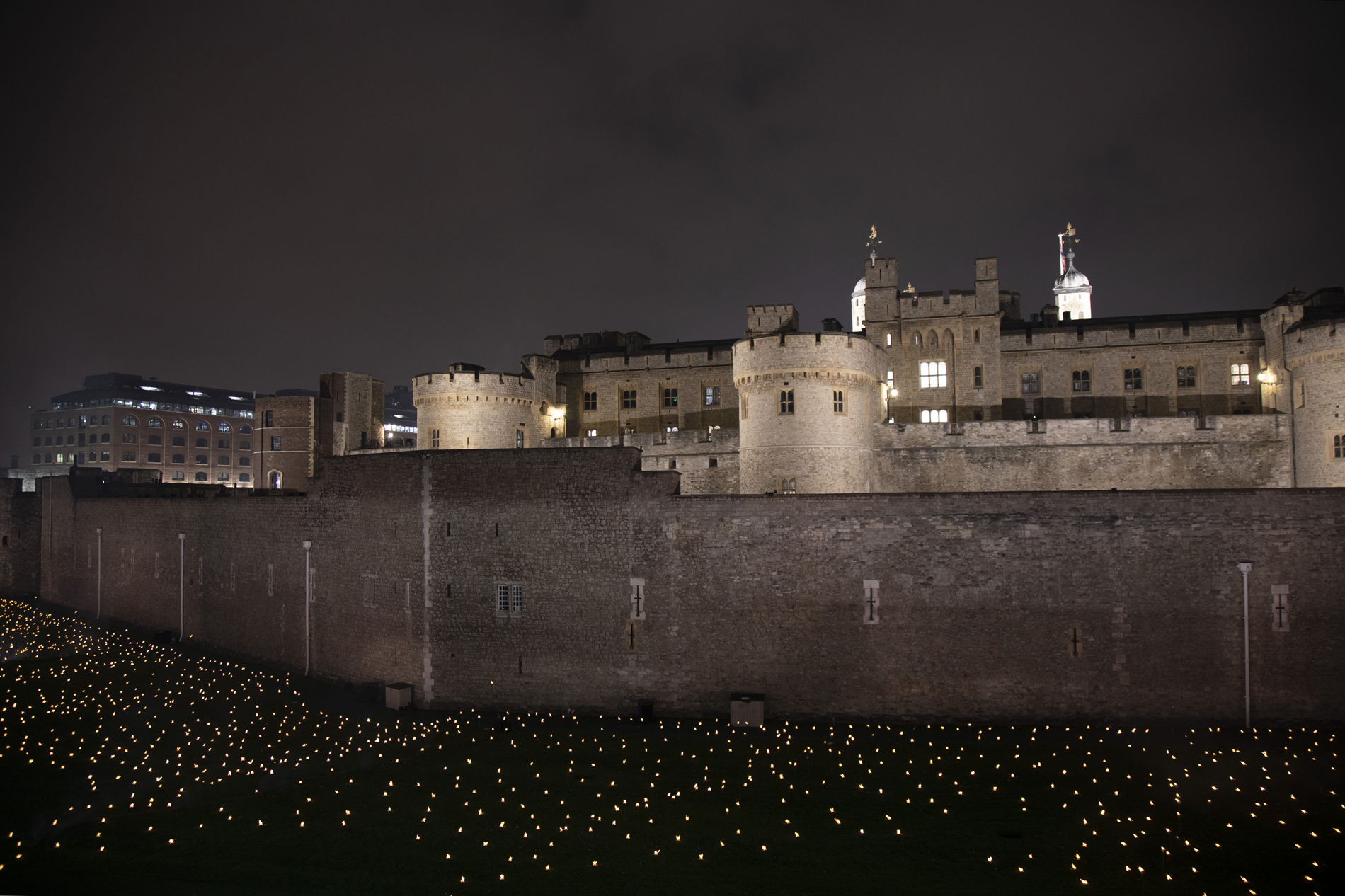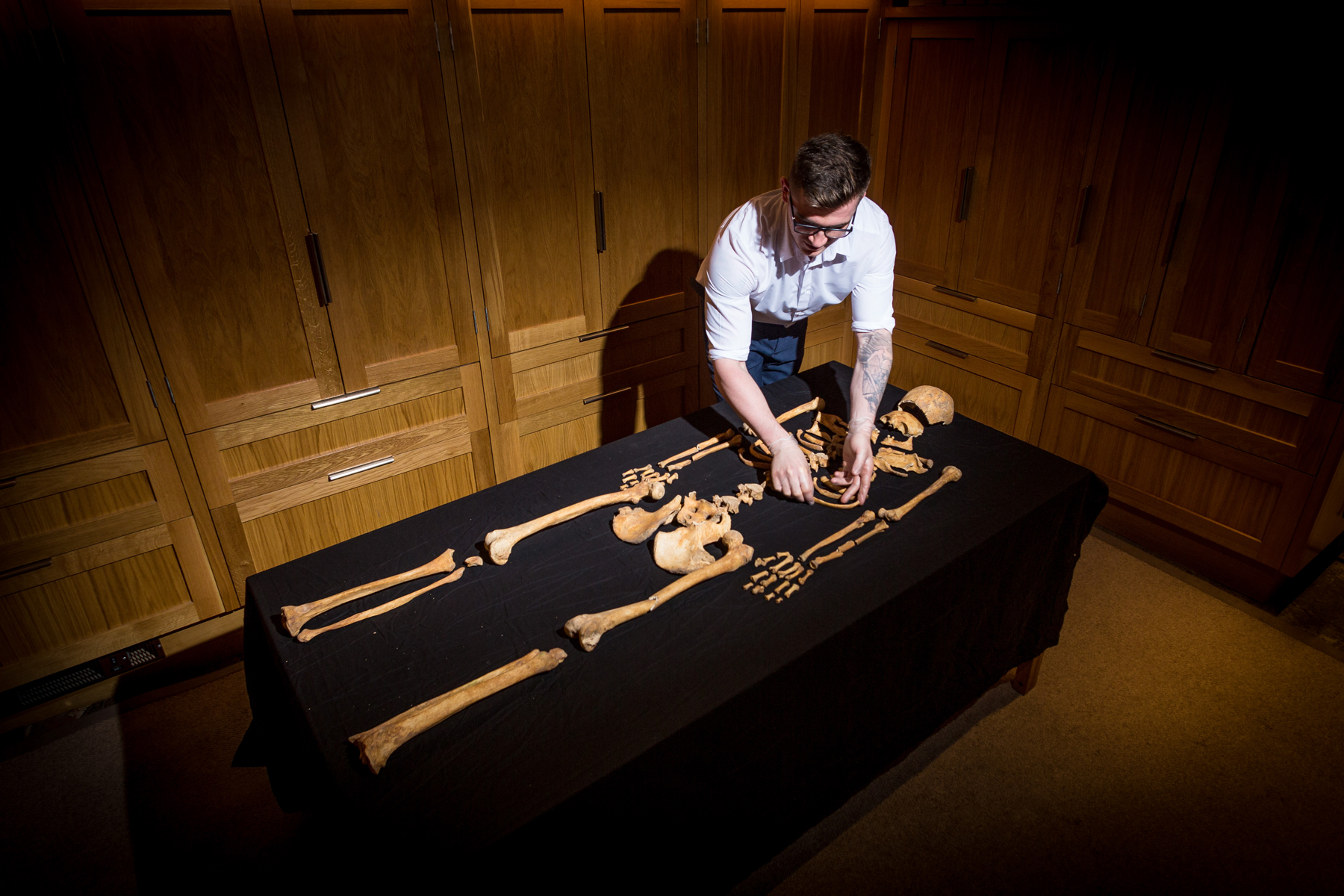Mysterious Skeletons of Woman and Girl Discovered in Lost Tower of London Chapel
The woman and child don't appear to have been prisoners.

The Tower of London is perhaps best known as a dungeon and burial ground where Anne Boleyn, Thomas More and various other friends and exes of Henry VIII were laid to rest after losing the king's favor (and their heads).
But for much of its 950-year history, the tower was also a thriving palace and community center. Within the medieval castle's walls were chapels, pubs, government offices and residences for the hundreds of Londoners who kept the place running. And as the first new skeletal discovery in nearly 50 years reminds us, not all who were buried there were ministered by the headsman's ax.
Two intact skeletons — one of a woman who died at approximately 40 years old and one of a 7-year-old girl — were recently exhumed from connected burial plots below the tower's Chapel of St. Peter ad Vincula. The pair are the first skeletons discovered at the tower since the 1970s and the first complete skeletons from the tower to ever have their bones analyzed by an osteoarchaeologist, curators at the tower said in a news release.
Related: Bones with Names: Long-Dead Bodies Archaeologists Have Identified
This in-depth look at the departed duo revealed that both adult and child lived the uncomfortable lives of the laboring class. According to Alfred Hawkins, a curator at Historic Royal Palaces (the nonprofit that cares for the tower), the find suggests that the Tower of London was not only a place where traitors and nobles were laid to rest, but was also a burial site for the many common folk who lived and worked there.

"As the first complete remains to be examined from within this royal fortress, they have offered us a chance to glimpse that human element of the tower, which is so easy to miss," Hawkins said in a statement. "This fortress has been occupied for almost 1,000 years, but we must remember it was not only a palace, fortress and prison, but that it has also been a home to those who worked within its walls."
Hawkins and his colleagues discovered the skeletons while conducting an archaeological survey to make the Chapel of St. Peter ad Vincula more wheelchair-accessible. Just outside the chapel's main entrance, the researchers discovered the remains of what appeared to be an even older chapel, including a medieval floor. Cut into the floor were two burials, arranged side by side.
Sign up for the Live Science daily newsletter now
Get the world’s most fascinating discoveries delivered straight to your inbox.
The two skeletons were found lying on their backs with their feet facing east, typical of a Christian burial, the curators said. The adult woman appeared to have been interred in a coffin (some coffin nails were found nearby), while the girl appeared to have been simply wrapped in a burial shroud before being laid to rest. These customs were typical of the late medieval and early Tudor periods, suggesting that the skeletons were interred between 1450 and 1550, sometime between the War of the Roses and the reign of Edward VI (Henry VIII's son).
An analysis of the bones revealed that both showed signs of illness at death and that the older woman likely had chronic back pain. There were no signs of violent death (i.e., no ax marks in the cervical region). All the clues pointed to two castle residents — neither royals nor prisoners — who lived, worked and eventually died at the tower before being respectfully buried there.
The skeletons have now been reinterred in the chapel during a special ceremony conducted by the Tower of London chaplain, the curators said. May they rest (again) in peace.
- Family Ties: 8 Truly Dysfunctional Royal Families
- Photos: In Search of the Grave of Richard III
- The 25 Most Mysterious Archaeological Finds on Earth
Originally published on Live Science.

Brandon is the space/physics editor at Live Science. His writing has appeared in The Washington Post, Reader's Digest, CBS.com, the Richard Dawkins Foundation website and other outlets. He holds a bachelor's degree in creative writing from the University of Arizona, with minors in journalism and media arts. He enjoys writing most about space, geoscience and the mysteries of the universe.










